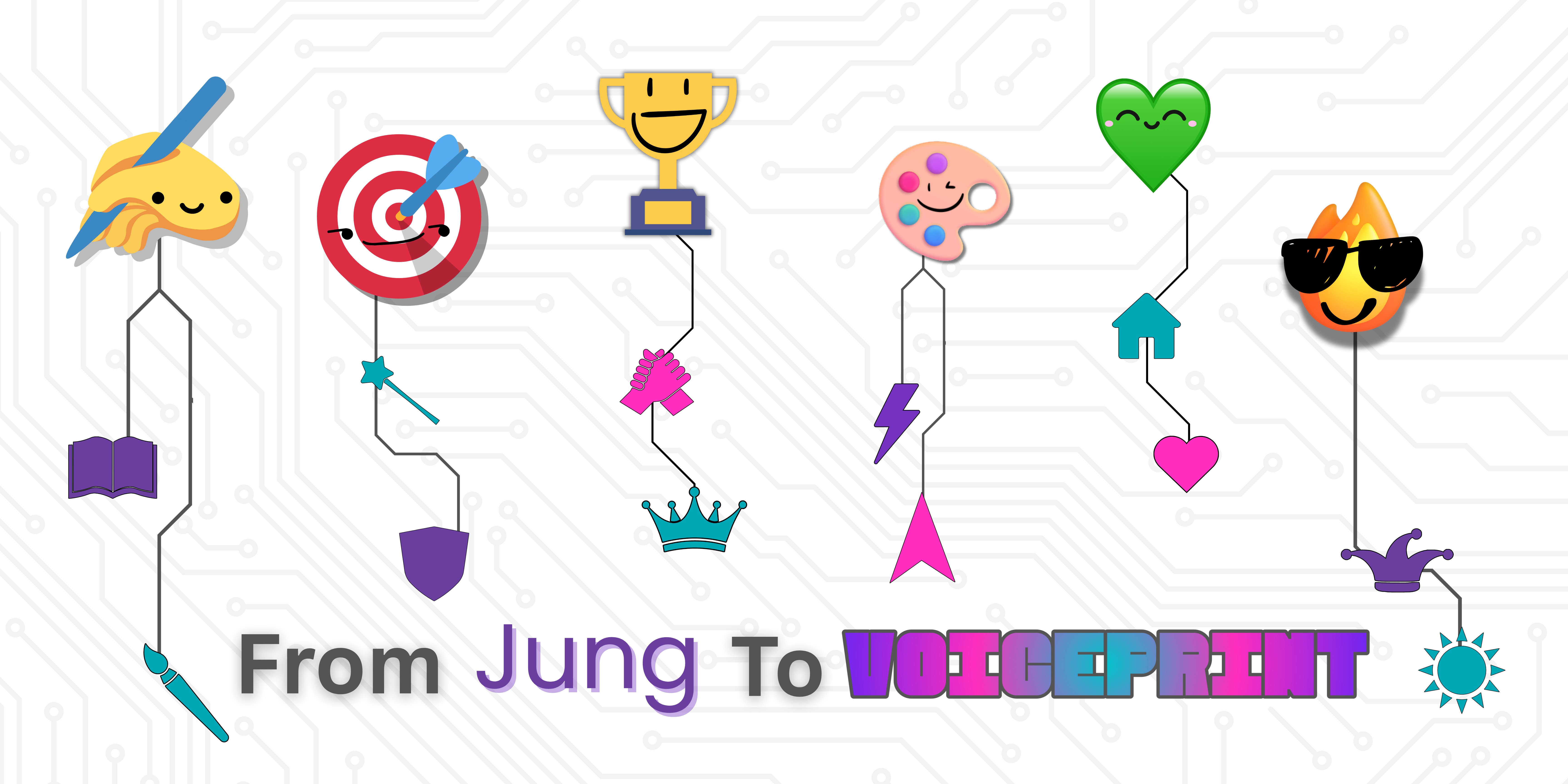Welcome to the heart of Prompt Like Me: our Archetype Voiceprint Theory. This framework isn't just a quiz result; it's a fresh take on blending timeless storytelling archetypes with the science of "voiceprints" to supercharge your AI content. Inspired by Carl Jung's psychological archetypes (universal patterns like the Hero or Jester that shape human narratives) and modern voiceprint analysis (the unique "fingerprint" of your writing style, from tone to quirks), our theory helps you map your personality to AI prompts.
The result? Content that feels authentically you (witty, authoritative, or narrative) across platforms like Twitter, LinkedIn, or blogs. In a 2025 world where 68% of creators struggle with "robotic" AI outputs (Content Marketing Institute), this theory turns generic text into your signature style, boosting engagement by up to 40% through relatable, voice-aligned storytelling.
The Roots: Jungian Archetypes Meet Voiceprints

Carl Jung's archetype theory, developed in the early 20th century, posits that humans share innate "prototypes" of behavior and personality—like the Jester (playful disruptor) or Sage (wise guide)—drawn from our collective unconscious. These patterns appear in myths, literature, and modern branding, helping us connect emotionally (as seen in Joseph Campbell's "Hero's Journey").
Fast-forward to today: Voiceprint analysis, rooted in biometrics and linguistics, captures your writing's "fingerprint" through metrics like sentence rhythm, vocabulary flair, and emotional tone (similar to how ElevenLabs analyzes audio voiceprints for AI cloning).
Our Archetype Voiceprint Theory fuses these: We identify your dominant archetype (e.g., Quipster for witty Jester types) and overlay it with your voiceprint quirks (e.g., puns and emojis). This creates a "blueprint" for prompting AI, ensuring outputs aren't just functional—they're you. For instance, a Quipster's voiceprint might emphasize short, sarcastic bursts, while a Narrator leans into empathetic, flowing stories. By training AI on this hybrid, you avoid bland defaults and craft content that resonates, much like brands using archetypes for cohesive messaging (Toast Studio, 2025).
How It Works: From Quiz to AI Magic
The theory kicks off with our free Voice Quiz, analyzing your responses across tone, structure, and quirks to assign one of 12 archetypes (4 primaries like Quipster or Authority, plus 8 hybrids like Quipster-Maverick). Each archetype maps to a voiceprint profile—e.g., the Maverick's bold, unconventional phrasing or the Razor's sharp, concise insights—backed by Jungian traits adapted for content creation.
From there, it shapes your AI workflow:
- Personalization Layer: Feed archetype-specific prompts into tools like ChatGPT (e.g., "Write a LinkedIn post as a Quipster: witty, sarcastic, with puns. Example: 'Mondays? Decaf disasters! ☕😹'").
- Voiceprint Refinement: Use our audit checklist to iterate outputs, ensuring 85%+ alignment (e.g., measure sarcasm via wordplay count).
- Hybrid Power: Blend archetypes for nuanced content, like a Narrator-Authority post that's empathetic yet commanding.
This isn't theory for theory's sake; it's a practical system. Creators using archetype-based prompting report 2x higher engagement (Rival IQ, 2024), as it taps into universal patterns while honoring your unique voiceprint.
Why It Matters for Creators in 2025
In an AI-saturated era (75% of organizations use gen AI, McKinsey 2025), standing out means ditching the generic. Archetype Voiceprint Theory empowers you to prompt AI like a personal stylist—tailoring outputs to your style without hours of editing. For influencers, it means viral tweets; for thought leaders, authoritative newsletters; for bloggers, captivating stories.
It's scalable, too: Build a prompt library tagged by archetype, and watch your content ecosystem thrive.
Ready to discover your voiceprint? Take the quiz now and unlock your archetype blueprint.
